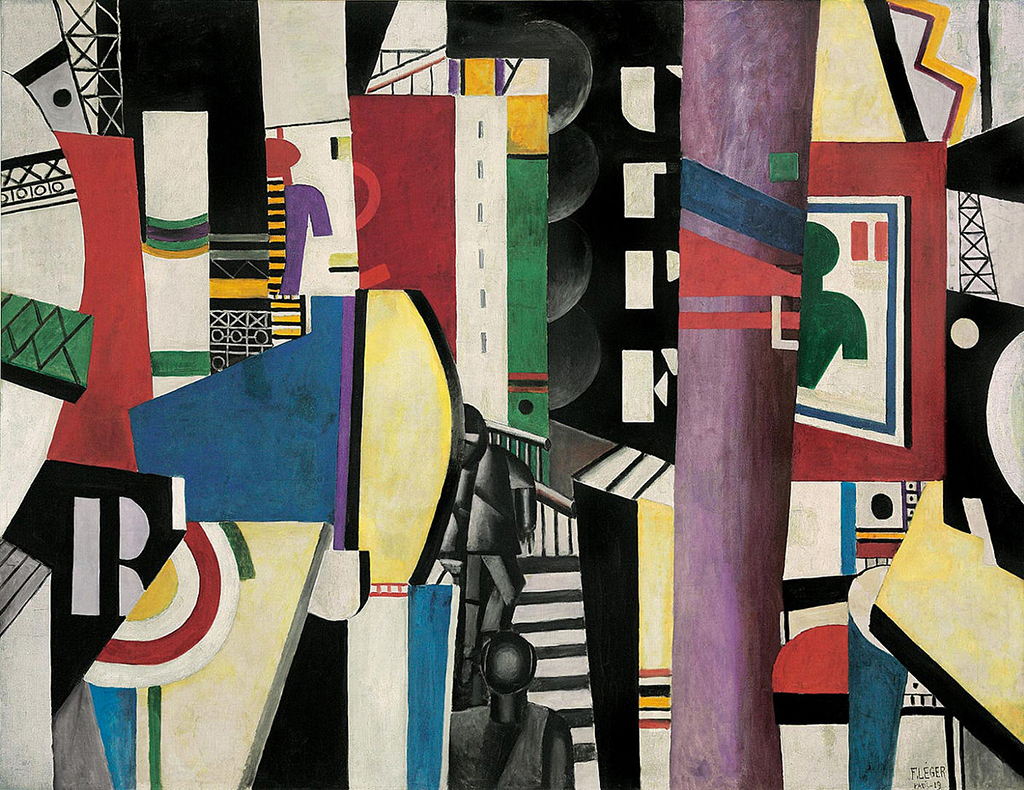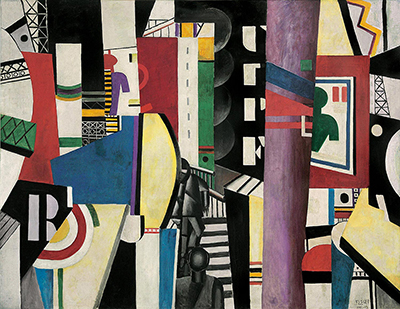The City, or La Ville to give it it's original French title, is one of Fernand Leger's most memorable Cubist paintings and was completed in 1919. The artist would have been in his late thirties at that time.
This unique artwork is essentially a Cubist cityscape, and once you are aware of that one can start to pick out different elements of the scene. The tall tower blocks are normally what first catch your eye, before you can then identify sections of a bridge, some advertising hoardings and even individual figures looking out of their windows. The busy nature of city life is perfectly captured by Leger's original approach to Cubism. This large painting measures 231.1cm tall by 298.4cm wide and can now be found in the collection of the Philadelphia Museum of Art, having been donated to the institution in 1952. The generous individual involved was Albert Eugene Gallatin and The City was just one of a number of high profile pieces that he handed over in his substantial bequeth.
During the time in which Leger created this unusual style of depicting cities, industrialisation was taking hold and having a huge impact on the environment in which city dwellers were living and working. His native Paris, which is where The City is likely to have been created and based upon, was undergoing a huge transformation towards the beautiful and exciting city that we all can enjoy today. He was surprised on visiting these great cities as to the light that would cover his face, from a variety of angles and sources. The sheer complexity of man-made influences would saturate his mind, as it did everyone else. Surely, he felt, this could not be healthy nor desirable? Also, had humanity gone too far in its development and lost touch with the benefits of a simpler life?





